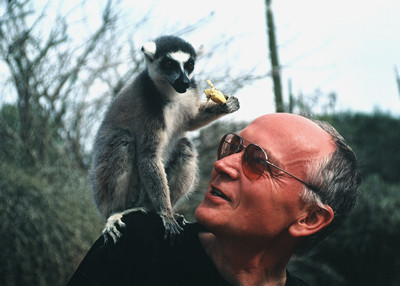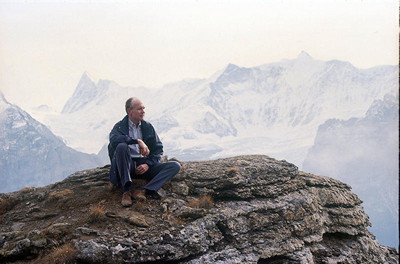
Henn Volker Henn was born to 1943 in Gotha in the former German Democratic Republic, and moved to West Germany with his family in 1951. Despite a strong family tradition in architecture, he was attracted to medicine. While in medical school, he studied with O.J. Grüsser in Berlin, who shaped his interest in the physiology of the visual system At Grüsser’s suggestion, he came to my laboratory in New York when he finished medical school. We were just starting studies of single unit activity and eye movements in the alert monkey, combining them with vestibular stimulation and computer analysis. Here he first developed his interest in the oculomotor and vestibular systems. It was a critical and productive year, and it laid the foundation for much future work for both of us. Volker then moved to Zurich, where he studied neurology with Günter Baumgartner. He became an excellent clinical neurologist and teacher of neurology. Baumgartner also encouraged his research interests, and helped him found a vestibular and oculomotor laboratory. Combining both animal and human studies, it has become world famous.
Volker was made Professor of Neurology in 1983. When Baumgartner died in 1991, he became Acting Director of the Department of Neurology at Zurich, serving for four years. In 1977, he won the Goetz Prize of the University of Zurich, the Franceschetti-Liebrecht Prize of the German Ophthalmological Society in 1978, and the prestigious Hallpike-Nylen-Prize of the Bárány Society in 1990. He was an active member of editorial boards of numerous scientific journals, advisory member for many research foundations, and president of the Betty & David Koetser Foundation for Brain Research, which sponsored the meeting that led to this book. Volker Henn made both fundamental and clinical contributions to our knowledge of the oculomotor system. He showed how neural activity in the pontine reticular formation is spatially organized to produce horizontal saccadic eye movements. He did seminal work with Jean and Ulrich Blüttner on the nature of neural activity responsible for vertical saccadic eye movements in the rostral iMLF. Through his experiments with kainic acid, he gave us a better understanding of the neural organizations that produce horizontal, vertical, and torsional saccades. With Klaus Hepp, he showed how neural activity is organized in motoneurons, and determined the coordinate frame for these movements. From this came his understanding that Listing’s Law is a fundamental phenomenon that underlies eye movement. His investigation of movements in Listing’s Plane is one of his major contributions. He was fascinated by the meaning and importance of this phenomenon, and did both behavioral and single-unit experiments to understand it.
Volker Henn also made important contributions to our knowledge of the vestibular system. His early papers with Walter Waespe, based on work begun in collaboration with Laurence Young, showed that visually related processes could be detected at the very first central synapse in the vestibular system. This was a fundamental finding and it was largely unappreciated up to that time. It demonstrated the importance of vision in vestibular function, especially in primates. It also highlighted the importance of studying brain function in alert animals, and it has led to a large body of work on visual-vestibular interaction.
Volker was a humanist and an intellectual. He was a warm, caring, and sympathetic friend. He loved art and literature, and was an avid bibliophile, collecting early editions about the history of science. Ernst Mach was someone that he particularly admired, and most recently, he did an imaginative translation of Mach’s “Grundlinien der Lehre von den Bewegungsempfindungen” with Laurence Young. He was a circus buff, and he loved zoos, particularly if they had monkeys. Thus, a trip to Japan was not complete without seeing the Monkey Island at Beppo. He had other wide-ranging interests that included cycling, scuba diving, and biology wherever he found it. The accompanying photograph, taken during a trip to Madagascar, where he measured the eye movements of chameleons, shows a ring-tailed lemur responding to this interest.
His sudden, unexpected death shocked all that knew him. The man who initiated and helped plan the conference did not live to see it realized. Fortunately, the Koetser Foundation and the Department of Neurology of the University of Zurich enabled us to hold the conference, which was superbly organized by Bernhard Hess and his colleagues from the Department of Neurology.
The book that arose from this conference is the first to my knowledge that is devoted solely to the otoliths and to otolith function. We have dedicated it to the memory of Volker Henn, my close friend, for both his scientific contributions and his humanity. Volker Henn’s death has left a large void that will not be filled easily, but the body of work that he left behind and the ideas that it will generate are his legacy to the field.
BERNARD COHEN
from Annals of the NYAS, vol 871, 1999

